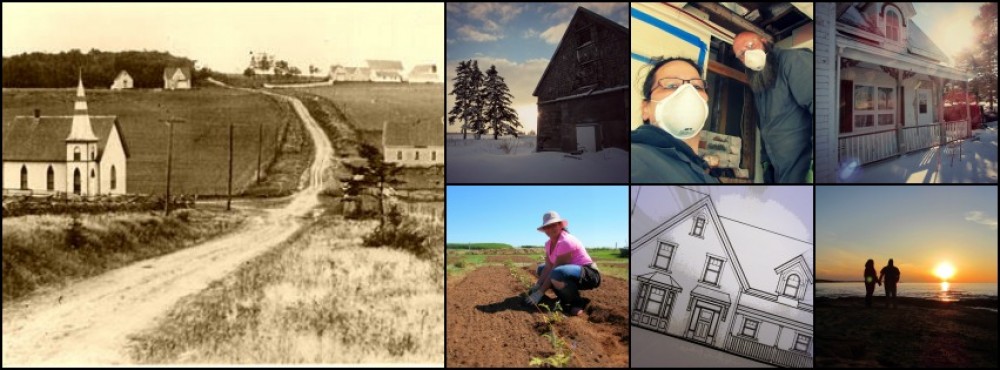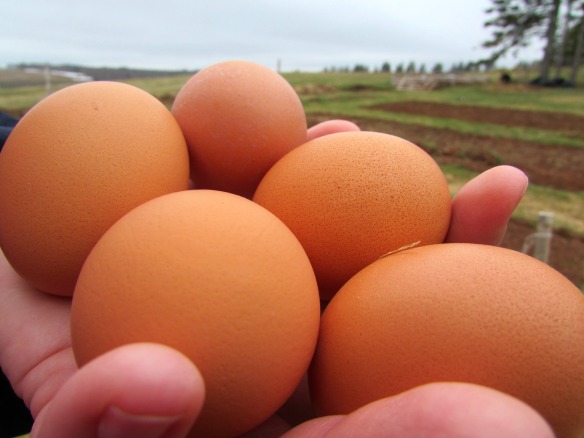It was bound to happen sooner or later.
We’ve had our first letdown on our old island farm. And it came in the form of a disease called “late blight”.

Sadly, once infected, the affected plants (in our case, tomatoes) are essentially doomed and destroying these plants is the only hope of preventing it from spreading to other plants.

This disease is famous as the cause of the Irish potato famine in the 1800’s. Phytophthora infestans is not a fungus or a bacterium or a virus. It belongs to a group of organisms called “protists”, although they are still commonly referred to as “fungi”.

On tomato, the first symptom on plants is often a brown/black lesion on the stem. Leaves develop large brown/black blotches, often starting at leaf margins. In humid weather and in early mornings, a fuzzy mould can often be seen on the underside of the brown/black blotches or on the stem lesions.

On tomato fruit, infection causes a brown/black, leathery rot. It may also become soft and mushy if invaded by secondary organisms.
In cool, wet or humid weather the pathogen produces structures called “sporangia”. These sporangia can travel up to 20 kilometers in wind or wind-blown rain. Rain-spread sporangia can cause infection even in a garden where tomatoes or potatoes have not been grown before.
Potatoes are also very susceptible to late blight – hence the cause for concern when it is detected here in Prince Edward Island. Fortunately, our potatoes seem to have come away unscathed. We’ve been enjoying new potatoes daily for a couple of weeks and we’re ready for our big harvest for cold-storage this weekend.
We first heard of a blight-outbreak in our area on the local news. It was just a few days later when we started seeing the signs of infection on our own tomatoes. And once it started, everything went downhill quickly.

With the onset of the disease, we moved to remove the plants and bag them for disposal. It’s strongly recommended that you NOT compost the affected plants as the organisms may not die in the composting process. Burying, burning or sending the plants to the landfill is the best way to rid your garden of the active problem.

Although the plants were dying, we could still use the green tomatoes if we acted quickly. Often with late blight, even green tomatoes brought in the house to ripen may still rot anyway. In wet weather, green fruit may have been infected already, or be carrying spores on the surface. As the fruit ripens, rot develops.

Some gardeners report that washing green fruit in soap and water after picking, or dipping green fruit in a 10% bleach solution (1 part household bleach to 9 parts water) followed by a soap and water wash, reduces fruit rot during ripening. We didn’t take any special measures to allow the tomatoes to ripen – so we did lose quite a lot to rot, but we still enjoyed a few fresh tomato sandwiches in the meantime.

So with the glut of green tomatoes, we spent a couple of days making a few different preserves – Salsa Verde, Green Tomato and Pineapple Chutney and Piccalilli. I’ll be sharing some of these ideas in future posts, but today, it’s all about Green Tomato Chow.
On Prince Edward Island, these firm, under-ripe green tomatoes are transformed into a tangy-sweet condiment that is often served alongside salt cod cakes. I’ve had Green Tomato Chow (or Chow Chow, or Yum Yum, depending on your upbringing) on a couple of occasions since moving to the island. Most recently with crab cakes from the Blue Mussel Cafe in North Rustico. Think of it as a relish, to be served alongside seafood, pork, sausages or even hamburgers.
At any rate, it’s a great way to use up some of your end-of-season green tomatoes – whether by choice or by….blight.

GREEN TOMATO CHOW
- Green tomatoes, sliced – 5-1/2 lbs.
- Onions, halved and sliced – 1-1/2 lbs.
- Pickling salt – 1/3 cup
Layer tomatoes and onion with salt in large pot. Cover and let stand on counter overnight. Drain. Add the following ingredients to the tomato mixture in pot.
- Granulated sugar – 3-1/3 cups
- Mixed pickling spice (tied in cheesecloth) – 4-1/2 tbsp
- Turmeric – 2 tsp
- White vinegar – 2 cups
Heat and stir until sugar dissolves. Bring to a boil then reduce to simmer for two hours, stirring occasionally. More turmeric can be added for color and more sugar can be added for taste.
For canning, pour into hot sterilized jars leaving 1/4″ headspace. Seal and process for 10 minutes in hot water bath. Makes about 4 pints.
So not all was lost. Although our first season growing a variety of tomatoes was a bit of a bust, we have learned a lot. We lost about 90% of the tomatoes we planted. One variety we chose is labelled as blight-resistant, and these “Mountain Merit” tomatoes are chugging along nicely in their beds. So it seems we’ll still be enjoying some red tomatoes after all.

This Chow recipe was inspired by “Company’s Coming – Preserves” by Jean Pare.



















































































